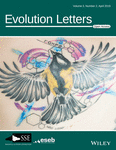Comparative genomics of 10 new Caenorhabditis species.
Evol Lett. 2019 Apr 2;3(2):217-236. doi: 10.1002/evl3.110. eCollection 2019 Apr.
Stevens L1, Félix MA2, Beltran T3, Braendle C4, Caurcel C1, Fausett S4, Fitch D5, Frézal L2, Gosse C2, Kaur T6, Kiontke K5, Newton MD3,7, Noble LM6, Richaud A2, Rockman MV6, Sudhaus W8, Blaxter M1.
Author information
2. Institut de Biologie de l’Ecole Normale Supérieure, Centre National de la Recherche Scientifique, Institut National de la Santé et de la Recherche Médicale, École Normale Supérieure Paris Sciences et Lettres 75005 Paris France.
3. MRC London Institute of Medical Sciences London W12 0NN United Kingdom.
4. Université Côte d’Azur, Centre National de la Recherche Scientifique, Inserm Institute of Biology Valrose 06108 Nice France.
5. Department of Biology New York University New York New York 10003.
6. Center for Genomics and Systems Biology, Department of Biology New York University New York New York 10003.
7. Molecular Virology, Department of Medicine Imperial College London Du Cane Road London W12 0NN United Kingdom.
8. Institut für Biologie/Zoologie Freie Universität Berlin Berlin D-14195 Germany.
Abstract
The nematode Caenorhabditis elegans has been central to the understanding of metazoan biology. However, C. elegans is but one species among millions and the significance of this important model organism will only be fully revealed if it is placed in a rich evolutionary context. Global sampling efforts have led to the discovery of over 50 putative species from the genus Caenorhabditis, many of which await formal species description. Here, we present species descriptions for 10 new Caenorhabditis species. We also present draft genome sequences for nine of these new species, along with a transcriptome assembly for one. We exploit these whole-genome data to reconstruct the Caenorhabditis phylogeny and use this phylogenetic tree to dissect the evolution of morphology in the genus. We reveal extensive variation in genome size and investigate the molecular processes that underlie this variation. We show unexpected complexity in the evolutionary history of key developmental pathway genes. These new species and the associated genomic resources will be essential in our attempts to understand the evolutionary origins of the C. elegans model.
PMID: 31007946
DOI: 10.1002/evl3.110

